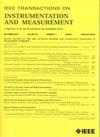PWDE-YOLOv8n: An Enhanced Approach for Surface Corrosion Detection in Aircraft Cabin Sections
IF 5.6
2区 工程技术
Q1 ENGINEERING, ELECTRICAL & ELECTRONIC
IEEE Transactions on Instrumentation and Measurement
Pub Date : 2025-01-16
DOI:10.1109/TIM.2025.3527589
引用次数: 0
Abstract
This study presents C2fPSCB WOTriplet DTDLH EMA-SlideLoss YOLOv8n (PWDE-YOLOv8n), an enhanced method for detecting surface corrosion in aircraft cabin sections, addressing challenges such as diverse corrosion morphologies, low background contrast, poor image quality, and detection inaccuracies. We introduce an omnidirectional gradient grayscale equalization method to improve sample quality while mitigating excessive sharpening and feature erosion. The backbone network incorporates a C2f PKIModule-S-CAA Bottleneck (C2fPSB) module, leveraging variable receptive fields to capture multiscale features and remote context information effectively. To prevent overfitting, we implement the weight optimized triplet (WOTriplet) attention mechanism, which dynamically adjusts branch weights based on input features. Furthermore, we construct a dual-task dynamically aligned detection head (DTDLH) detection head to align and fuse information from corrosion classification and regression tasks, addressing information loss due to insufficient interaction among detection heads. We employ exponential moving average (EMA)-sliding loss function (SlideLoss) to assign weights to the classification loss function, incorporating EMAs for improved stability in scenarios with sudden threshold changes or noise outliers. Experimental results on our aircraft cabin surface corrosion dataset demonstrate that compared to the baseline model, our improved algorithm achieves a 7% increase in mAP50 and a 9.3% increase in mAP50-95 while reducing parameters by 1.01M, model size by 2.0 MB, and enhancing inference speed by 42.02 frames/s. The PWDE-YOLOv8n algorithm exhibits superior comprehensive performance compared to other object detection algorithms, effectively meeting the accuracy and speed requirements for real-time identification of aircraft cabin surface corrosion. These findings offer valuable insights for deploying models on devices with limited computational resources.求助全文
约1分钟内获得全文
求助全文
来源期刊

IEEE Transactions on Instrumentation and Measurement
工程技术-工程:电子与电气
CiteScore
9.00
自引率
23.20%
发文量
1294
审稿时长
3.9 months
期刊介绍:
Papers are sought that address innovative solutions to the development and use of electrical and electronic instruments and equipment to measure, monitor and/or record physical phenomena for the purpose of advancing measurement science, methods, functionality and applications. The scope of these papers may encompass: (1) theory, methodology, and practice of measurement; (2) design, development and evaluation of instrumentation and measurement systems and components used in generating, acquiring, conditioning and processing signals; (3) analysis, representation, display, and preservation of the information obtained from a set of measurements; and (4) scientific and technical support to establishment and maintenance of technical standards in the field of Instrumentation and Measurement.
 求助内容:
求助内容: 应助结果提醒方式:
应助结果提醒方式:


